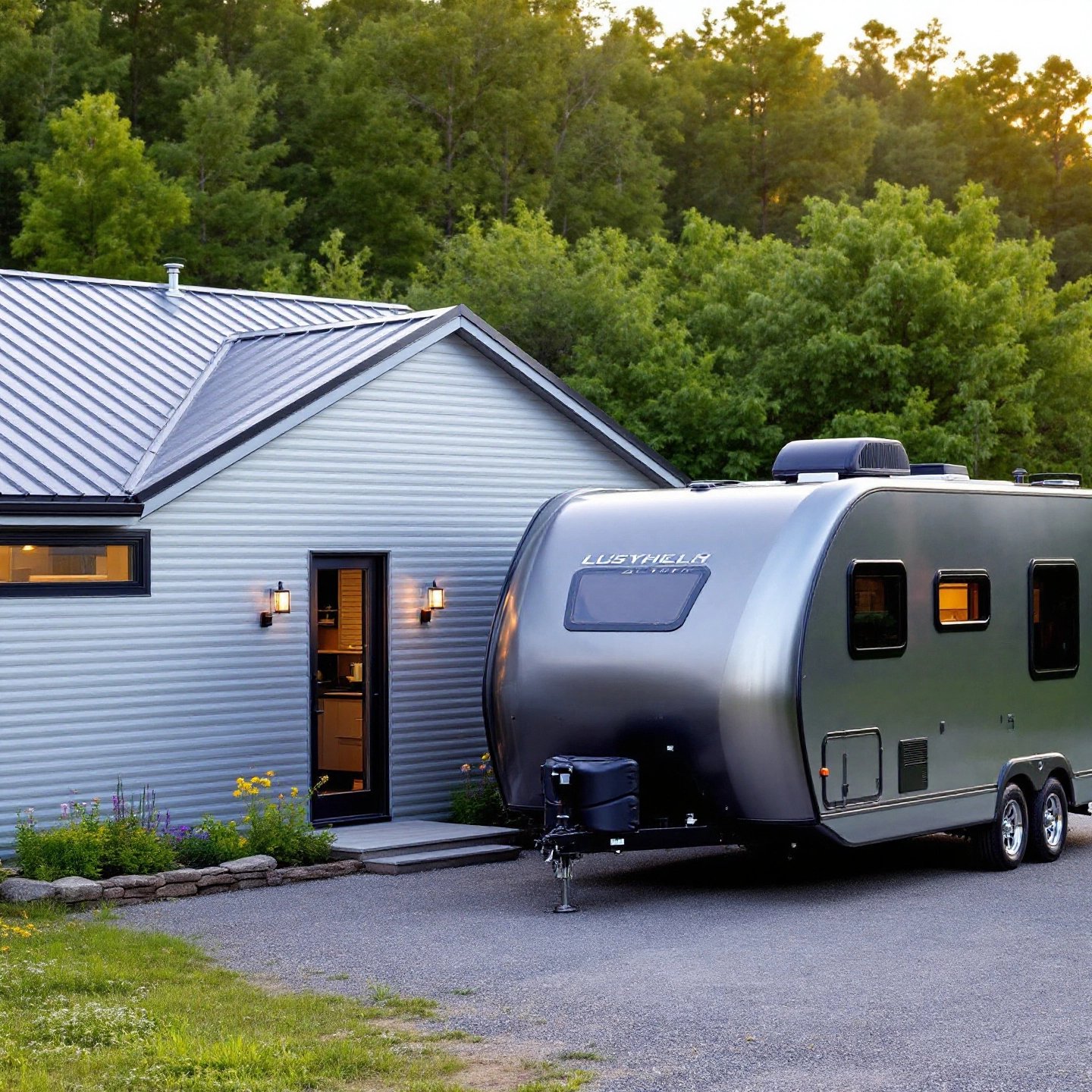
When considering exterior cladding options for your home or RV, aluminum siding stands out as a versatile and reliable choice. Known for its durability and cost-effectiveness, aluminum siding has been a preferred option for many homeowners and RV enthusiasts alike. But what makes aluminum siding so popular, and why does it continue to be a go-to choice for exterior cladding?
Aluminum siding offers a range of benefits that contribute to its enduring popularity. One of its key attributes is its exceptional durability. Resistant to rust, pests, and weather elements such as intense winds and heavy rains, aluminum siding ensures long-lasting protection for your property. This durability is complemented by its low maintenance requirements; a simple rinse with a hose often suffices to keep it looking pristine.
In addition to being durable, aluminum siding is also cost-effective. While it may have a higher upfront cost compared to some other materials, its longevity and minimal maintenance needs often result in lower long-term expenses. Moreover, aluminum siding is available in a variety of colors and finishes, allowing for customization that can enhance the aesthetic appeal of any property.
This article will delve into several key aspects of aluminum siding, starting with its applications in residential settings and extending to its use in RVs and campers. We'll explore cost considerations, painting techniques, and repair methods, providing a comprehensive guide to understanding and maintaining aluminum siding. Whether you're considering aluminum siding for a traditional home or a mobile dwelling, this guide will equip you with the information needed to make an informed decision.
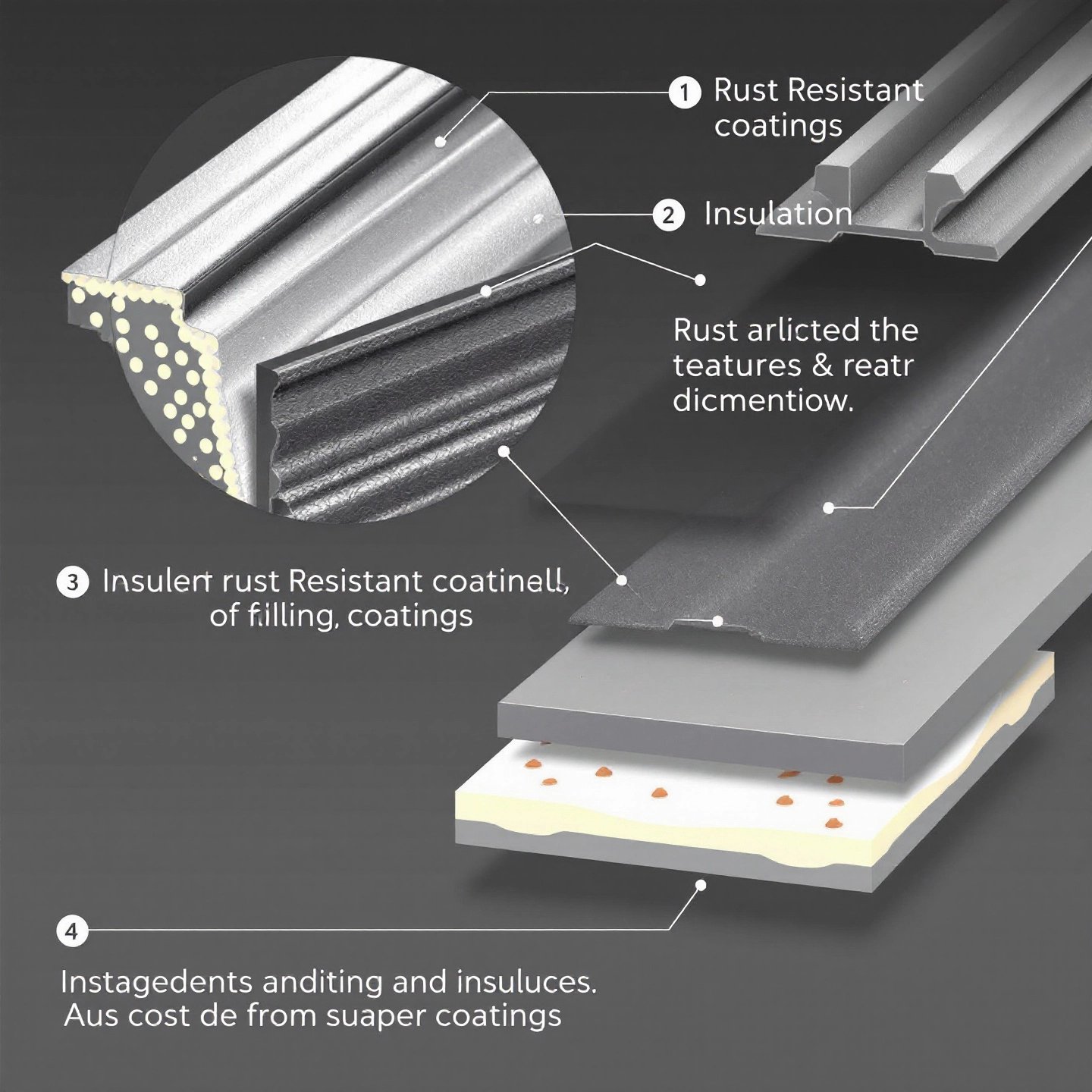
Aluminum siding, a staple in exterior home cladding, is renowned for its composition and manufacturing process that offers a blend of durability and aesthetic appeal. This siding is typically made from aluminum coil stock, which undergoes a chemical coating process to protect the metal from rust and weather damage. Subsequent painting and baking enhance its durability, often incorporating enamel to create texture and finish. This meticulous process results in a product that is both robust and visually appealing, making it a favored choice for many homeowners.
The manufacturing of aluminum siding involves precision-forming aluminum sheets into various profiles, which are then coated with a durable finish. This process not only ensures a sleek, modern look but also enhances the siding's resistance to rust and corrosion. The lightweight nature of aluminum makes it easier to handle during installation compared to heavier materials, further adding to its appeal.
Aluminum siding comes in a variety of dimensions and profiles, catering to diverse architectural styles and personal preferences. Common options include the '8 inch aluminum siding' and '45 degree aluminum siding', each offering unique aesthetic and functional benefits. The 8-inch panels provide a classic look with broad coverage, while the 45-degree profiles add a dynamic edge to home exteriors, often used to create a more modern appearance.
When it comes to aluminum house siding, the benefits extend beyond mere aesthetics. One of the standout features is its weather resistance, which ensures longevity even in harsh climates. Moreover, aluminum siding acts as an excellent insulator, helping to maintain indoor temperatures and potentially reducing energy costs. Protective coatings further enhance its ability to withstand environmental stressors, making it a practical choice for long-term home protection.
In addition to functional benefits, aluminum siding offers a range of aesthetic options. Homeowners can choose from a variety of colors and finishes, allowing them to customize their home's exterior to suit personal tastes and neighborhood standards. This versatility makes aluminum siding a compelling option for those looking to enhance their home's curb appeal without compromising on durability.
Aluminum siding offers a remarkable array of panel styles, each contributing uniquely to a home's aesthetic. Whether you're looking for a traditional or modern appearance, aluminum siding panels provide a versatile solution that can be tailored to meet diverse architectural preferences. Let's delve into the various styles and configurations and see how they can transform your home's exterior.
Residential aluminum siding comes in several popular styles, including horizontal, vertical, and shingle-like panels. Horizontal panels, often known as lap siding, are a classic choice that provides a sleek and continuous look. Vertical panels, such as board and batten, offer a more rustic or contemporary feel, depending on the finish and color chosen. Shingle-like panels mimic the appearance of traditional wooden shingles, providing a textured and dimensional look that adds character to any home.
The beauty of aluminum siding panels lies in their design flexibility. These panels can be customized in various dimensions and profiles, such as the popular '8 inch aluminum siding' or the distinctive '45 degree aluminum siding'. This flexibility allows homeowners to create unique designs that reflect their personal style and complement the architectural features of their home. Additionally, aluminum panel siding can be easily painted or finished in a variety of colors, offering endless possibilities for customization.
To achieve a polished and refined look, aluminum siding corners and trim are essential. These components not only enhance the aesthetic appeal but also provide functional benefits by sealing edges and preventing moisture infiltration. Trim options are available in matching or contrasting colors, allowing for creative design choices that can highlight or blend with the siding panels. By incorporating these elements, homeowners can ensure a cohesive and finished appearance for their home's exterior.
As we continue exploring aluminum siding, the next section will delve into cost factors and local installation considerations, providing insights on how to budget effectively for your siding project.
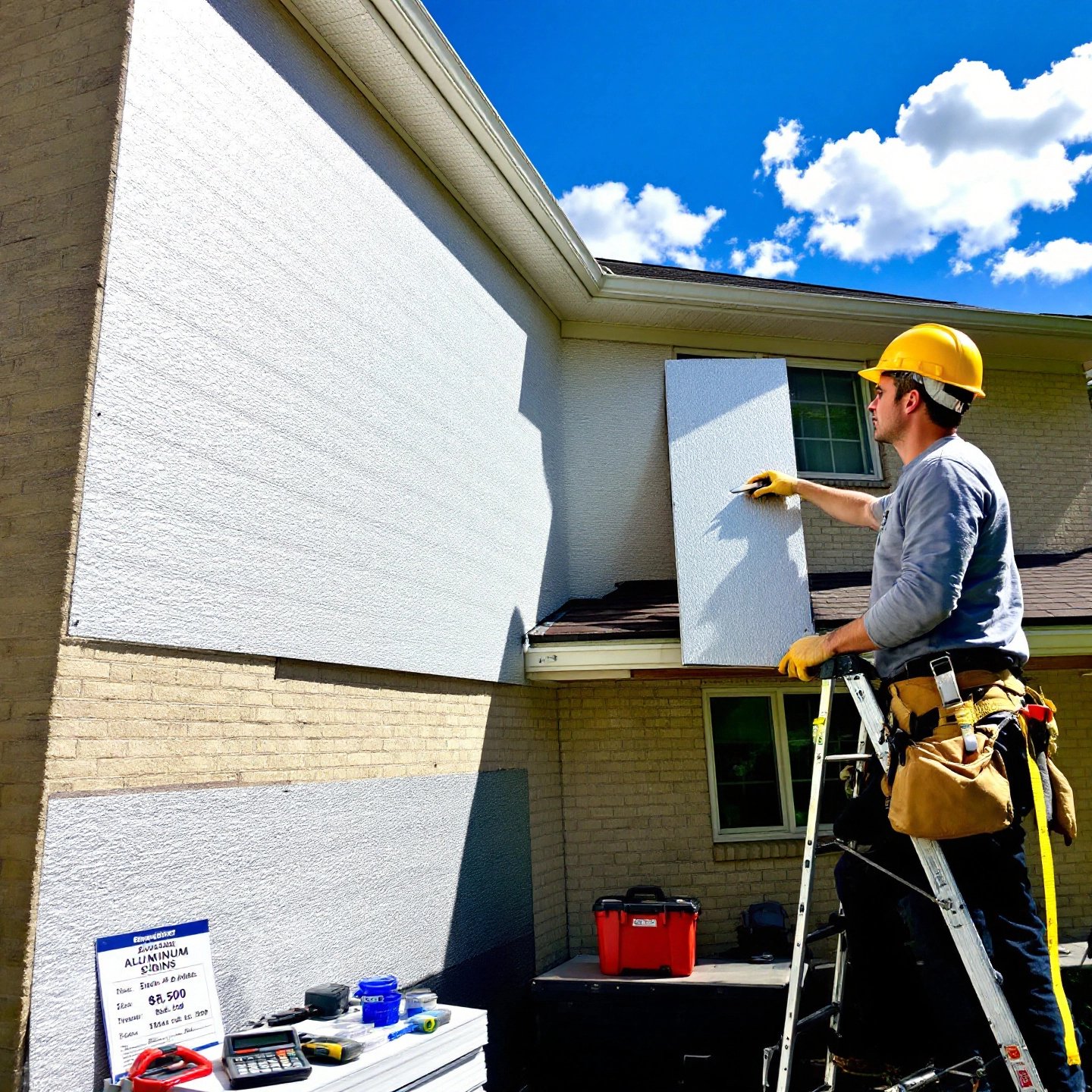
When planning to install aluminum siding, understanding the cost variables is crucial for effective budgeting. The overall aluminum siding cost can range from $6 to $10 per square foot installed, with total expenses for a typical 2,000 to 2,500 square foot home averaging between $12,000 and $25,000. These costs can vary significantly based on several factors, including material grade, labor rates, and regional market differences.
The thickness and quality of aluminum panels play a significant role in determining costs. Heavier-gauge aluminum panels are more expensive but offer increased durability and dent resistance, making them a worthwhile investment for long-term performance. Additionally, choosing pre-painted panels over raw aluminum can affect pricing, though pre-painted options often prove more economical in the long run by eliminating the need for post-installation painting.
Labor expenses make up 40% to 50% of the total installation cost. These costs can fluctuate based on the complexity of the home's architecture and the region's labor market. For homes with multiple stories or intricate designs, labor charges may be higher due to the increased effort and time required. It's advisable to obtain multiple quotes from local contractors to ensure competitive pricing.
Geographical location can impact both material and labor costs. For example, urban areas might have higher labor rates compared to rural regions. Searching for "aluminum siding near me" or "aluminum siding installers near me" can help identify local professionals familiar with regional pricing nuances. These searches can also connect you with contractors who offer free estimates, allowing for better financial planning.
Deciding between hiring a professional and taking a DIY approach depends on your comfort level with home improvement projects. While DIY can save on labor costs, it requires a significant time investment and a solid understanding of siding installation techniques. For those opting to hire, it's essential to choose a reputable contractor. Look for licensed, insured professionals with positive reviews and a portfolio of past projects. Asking potential contractors about their experience with aluminum siding and requesting local references can further ensure quality service.
As you weigh these factors, remember that investing in quality installation and materials can enhance the longevity and appearance of your siding, ultimately providing greater value over time. Next, we'll explore the differences between aluminum and vinyl siding, helping you make an informed decision based on performance and aesthetics.
When choosing siding for your home, understanding the differences between aluminum siding vs vinyl siding is crucial for making an informed decision. Both materials offer distinct advantages and challenges, impacting their suitability based on specific needs and preferences.
Aluminum siding is known for its durability, offering resistance to fire, water, and pests, which makes it an excellent choice for homes in areas prone to these elements. However, it can dent or scratch more easily than vinyl. On the other hand, vinyl siding, while not as fire-resistant, provides good moisture resistance but can become brittle in extreme cold or warp under intense heat. This makes aluminum the more durable option in terms of withstanding environmental stressors (source).
Cost is a significant factor when comparing these materials. On average, aluminum siding tends to be slightly more affordable than vinyl, with costs influenced by material quality and installation complexity. Both materials are generally accessible in terms of pricing, but aluminum offers a slight edge in affordability (source).
From an aesthetic perspective, vinyl siding offers more flexibility with a broader range of colors and finishes, including realistic wood grain options. It requires less maintenance than aluminum, which needs repainting every few years to maintain its appearance. Vinyl's low maintenance appeal is a significant advantage for homeowners seeking convenience (source).
Aluminum siding typically lasts longer, with a lifespan of about 40 years compared to vinyl's 20 to 40 years. Additionally, aluminum is more eco-friendly due to its recyclability, despite the environmental impact of its mining. Vinyl, while also recyclable, has a lower overall environmental impact during its lifecycle, according to the National Institute of Standards and Technology (source).
Ultimately, the choice between aluminum and vinyl siding depends on your specific needs—whether you prioritize durability, cost, aesthetics, or environmental impact. As you consider your options, the next section will guide you through the techniques for painting and maintaining aluminum siding, ensuring it remains a valuable asset to your home's exterior.
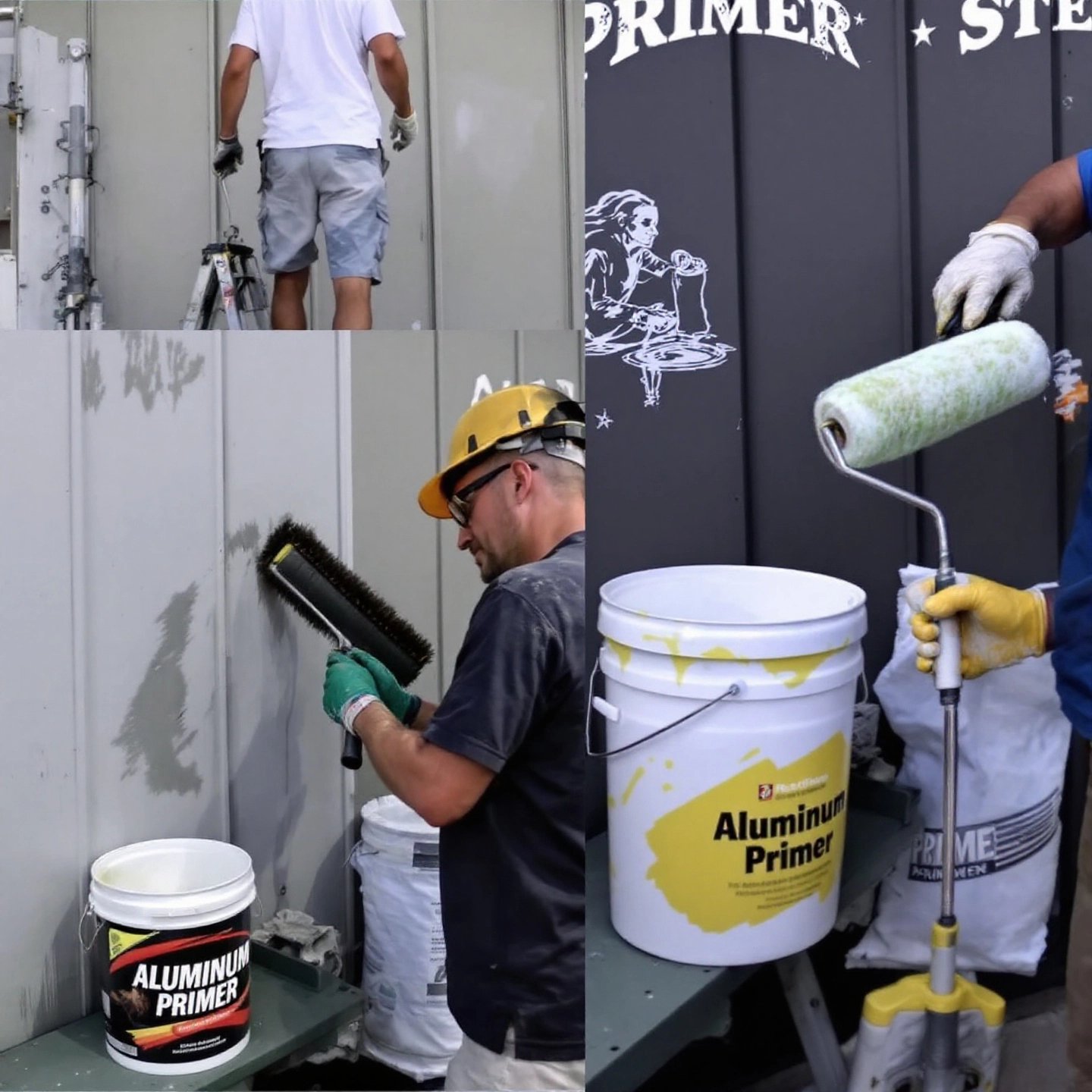
Painting aluminum siding can significantly enhance your home's curb appeal while prolonging the siding's lifespan. Whether you're tackling this project for the first time or repainting, following a systematic approach ensures the best results. So, can you paint aluminum siding? Absolutely, and here’s how to do it effectively.
Before diving into painting, proper preparation is crucial. Start by inspecting the siding for any damage. Repair small holes or dents using paintable exterior caulk and sandable acrylic latex filler. For larger holes, patch them with cut sections of aluminum sealed with exterior filler. Once repairs are complete, it's time to clean the surface. Use a pressure washer or scrub the siding with a mixture of household bleach, trisodium phosphate (TSP), and water to remove dirt, mildew, and oxidation. This step is essential to ensure the paint adheres properly. After cleaning, rinse thoroughly and allow the surface to dry completely.
Priming is a critical step, especially if the aluminum is bare or previously painted. Choose an oil-based primer for its superior adhesion properties, particularly on metal surfaces. Apply the primer evenly across the siding using a paint sprayer for large areas or a roller for smaller sections. Allow the primer to dry as per the manufacturer's instructions before proceeding to paint. This step not only enhances paint adhesion but also contributes to a smoother finish.
When selecting the best paint for aluminum siding, opt for a high-quality 100-percent acrylic latex paint. This type of paint offers durability and flexibility, essential for withstanding weather changes. Begin painting from the top of your home and work your way down, using a paint sprayer or roller. A sprayer provides even coverage, while a roller offers better control in smaller areas. Apply the first coat, ensuring even coverage by overlapping strokes slightly. Allow it to dry completely before applying a second coat. This second layer ensures durability and a consistent finish.
After the paint has dried, inspect the siding for any missed spots or uneven areas. Touch them up with a brush to achieve a seamless look. Regular maintenance, including periodic cleaning and inspections, will keep your newly painted siding looking fresh and vibrant. By following these steps, you can successfully repaint aluminum siding, enhancing both its appearance and longevity.
Painting aluminum siding requires careful preparation and the right materials, but the results can be transformative, offering a refreshed look and added protection. As we move forward, the next section will explore maintenance tips and repair solutions to ensure your siding remains in top condition.
Maintaining aluminum siding is crucial for preserving its aesthetic appeal and structural integrity. By incorporating routine cleaning, regular inspections, and timely repairs, you can significantly extend the lifespan of your siding. Here, we provide detailed maintenance tips and repair solutions to keep your aluminum siding in top condition.
Regular cleaning is essential to prevent dirt, grime, and mildew buildup, which can lead to oxidation and damage over time. It's recommended to wash your siding at least once a year using a mild detergent and a soft-bristle brush or a pressure washer set to a low setting. During cleaning, inspect for any signs of damage such as dents, holes, or loose panels. Early detection of issues can prevent more extensive repairs later.
For minor damages, such as small holes or dents, DIY repair is often feasible. To patch a hole, first, smooth the edges with a hammer or cut away jagged bits using tin snips. Next, cut a patch from leftover siding or a new piece that matches your existing panels. Apply butyl caulk around the hole and press the patch into place, securing it with duct tape until the caulk sets. For dents, drill a small hole in the center and use a screw and washer to gently pull out the dent. Fill the hole with auto-body filler, sand it smooth, and paint to match the surrounding siding. These techniques are simple and cost-effective, requiring basic tools like a hammer, tin snips, and caulk.
Aluminum siding corners and trim are not just decorative elements; they play a vital role in sealing edges and preventing moisture infiltration. Ensure that these components are intact and securely fastened. If any trim pieces are damaged or missing, replace them promptly to maintain the siding's protective barrier against water and weather elements.
By following these maintenance tips and repair solutions, you'll not only preserve the appearance of your aluminum siding but also enhance its durability. Proper care and timely repairs can prevent minor issues from escalating into costly problems. As we explore further, the next section will delve into specialized uses of aluminum siding for RVs and campers, highlighting its benefits in mobile applications.
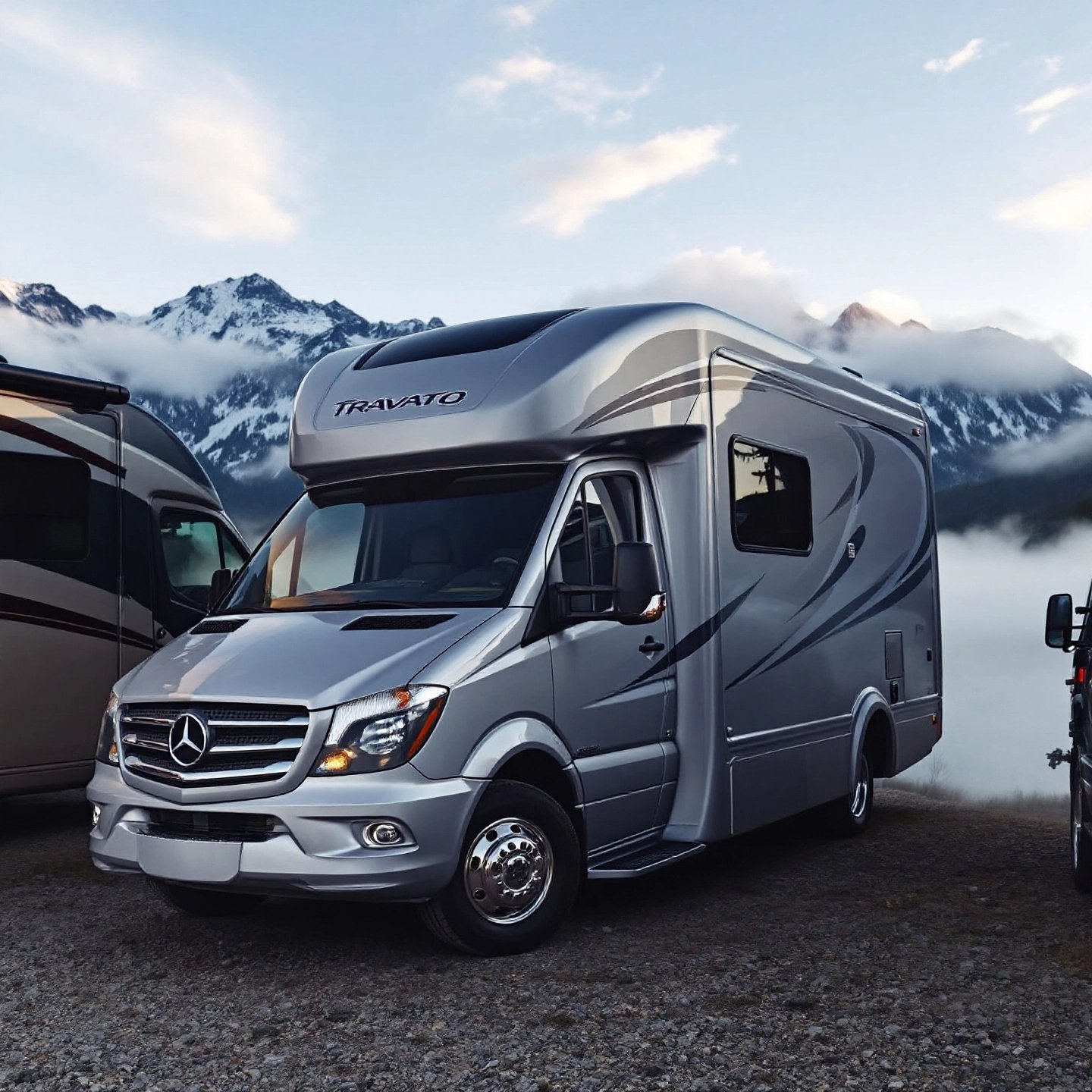
When it comes to RV and camper trailers, choosing the right siding is crucial for both aesthetics and functionality. RV aluminum siding stands out as a top choice, offering a perfect blend of lightweight durability and classic appeal. But what makes aluminum siding particularly suited for mobile applications? Let's explore its benefits and why it remains a favorite among RV enthusiasts.
One of the primary reasons RV owners opt for aluminum siding is its lightweight nature. Compared to heavier materials like fiberglass, aluminum significantly reduces the overall weight of the vehicle, which is a critical factor for fuel efficiency and ease of towing. This weight advantage does not compromise durability. Aluminum siding is known for its resistance to rust and corrosion, making it ideal for those who frequently travel through humid climates or near saltwater. Its ability to withstand harsh weather conditions without cracking or breaking ensures that your RV remains protected on the road.
Affordability is another compelling reason to choose aluminum siding for your RV. It is often more budget-friendly than other options, such as fiberglass, due to its lower initial cost and the widespread availability of replacement panels. This cost-effectiveness extends to maintenance as well. Aluminum siding requires minimal upkeep—regular cleaning with mild soap and water is usually sufficient to keep it looking new. Moreover, if a panel gets damaged, it can be easily replaced without the need to overhaul the entire side of the RV, saving both time and money.
For those who appreciate a vintage or classic look, aluminum siding offers a timeless appeal. Available in various finishes and colors, it allows RV owners to customize their vehicle's exterior to reflect personal style. Whether you prefer a sleek modern finish or a retro vibe reminiscent of vintage Airstream trailers, aluminum siding provides the flexibility to achieve your desired look.
Despite its many advantages, it's important to consider some drawbacks. Aluminum siding can be prone to dents and scratches from road debris or hail. While these do not typically affect the structural integrity, they may detract from the visual appeal. Additionally, aluminum can be noisier during rainstorms, amplifying the sound of raindrops. However, adding insulation inside the RV can help mitigate this issue.
In conclusion, rv aluminum siding offers a balanced combination of lightweight durability, cost-effectiveness, and aesthetic flexibility, making it an ideal choice for RV and camper trailer applications. As you consider siding options for your mobile home, remember that the right choice will enhance both your travel experience and the longevity of your investment. Next, we'll explore how to ensure long-term durability and curb appeal for aluminum siding in both stationary and mobile applications.
Maintaining the longevity and aesthetic appeal of aluminum siding requires a proactive approach that includes regular maintenance, timely repairs, and strategic upgrades. By focusing on these key areas, homeowners can ensure their aluminum siding remains both durable and visually appealing for many years.
Regular maintenance is essential for preserving the durability of aluminum siding. Start with routine cleaning to remove dirt, grime, and oxidation that can accumulate over time. Use a mild detergent mixed with water and a soft-bristle brush or a pressure washer set to a low setting to avoid damaging the siding. This not only keeps the siding looking fresh but also prevents buildup that can lead to deterioration.
In addition to cleaning, inspect the siding regularly for signs of damage such as dents, scratches, or loose panels. Early detection of these issues allows for timely repairs, preventing minor problems from escalating into significant damage.
Addressing repairs promptly is crucial for maintaining the structural integrity and appearance of aluminum siding. For minor dents or holes, simple DIY repairs can be effective. Use a hammer to flatten small dents and fill holes with exterior caulk or auto-body filler, by sanding and repainting to match the existing finish.
Correct painting intervals also play a vital role in maintaining curb appeal. Aluminum siding typically requires repainting every 5 to 10 years, depending on exposure to harsh weather conditions. Opt for high-quality acrylic latex paint, which offers excellent adhesion and flexibility, ensuring a long-lasting finish.
For homes with older aluminum siding, modernizing can significantly boost curb appeal. Consider updating the color scheme to reflect current trends or adding trim and corner pieces for a refined finish. These enhancements not only refresh the appearance but also add value to the property.
Additionally, integrating new technologies like insulated siding can improve energy efficiency while maintaining the classic look of aluminum. This upgrade can enhance both the aesthetic and functional aspects of your home.
By implementing these strategies, homeowners can ensure that their aluminum siding remains an attractive and durable feature of their property. As we conclude, remember that regular maintenance, timely updates, and strategic enhancements are key to preserving both the durability and curb appeal of aluminum siding.
As we wrap up this exploration of aluminum siding, it's clear that its benefits extend far beyond mere aesthetics. The durability, cost-effectiveness, and low maintenance requirements make aluminum siding a compelling choice for both residential homes and RVs. Its resistance to rust, pests, and extreme weather conditions ensures that it remains a reliable exterior cladding option for years to come.
For homeowners, the ability to customize aluminum siding with various colors and finishes offers a chance to enhance curb appeal while maintaining a sustainable and energy-efficient home. The insulation benefits of aluminum siding can lead to reduced energy costs, providing long-term savings that add to its overall value. Additionally, the ease of maintenance—requiring only occasional cleaning and repainting—means less time and money spent on upkeep.
When considering exterior updates, it's essential to weigh personal preferences and budget constraints. Aluminum siding offers a versatile solution that balances aesthetic desires with practical benefits. Its recyclability also aligns with environmentally conscious efforts, making it a responsible choice for those looking to reduce their ecological footprint.
Looking ahead, investing in quality aluminum siding can significantly impact property value and aesthetics. Whether you're updating a traditional home or outfitting an RV, aluminum siding provides a durable and attractive exterior that stands the test of time. As you plan your next exterior update, consider how aluminum siding can enhance your property's appeal and longevity, ensuring a wise investment for the future.
Yes, aluminum siding is still available and remains a popular choice for its durability and rust resistance, despite the rise of vinyl siding.
Aluminum siding can dent easily due to its lightweight nature and may require repainting over time, but it offers excellent weather resistance.
The cost ranges from $7,700 to $11,000 depending on the grade and labor, making it a cost-effective option compared to other materials.
Aluminum siding is lightweight, durable, and resistant to rust, making it ideal for RVs by enhancing fuel efficiency and protecting against weather.
Aluminum siding should be repainted every 5 to 10 years to maintain its appearance and protect against environmental damage.
 serviço on-line
serviço on-line 0086 136 3563 2360
0086 136 3563 2360 sales@sxalu.com
sales@sxalu.com +86 136 3563 2360
+86 136 3563 2360